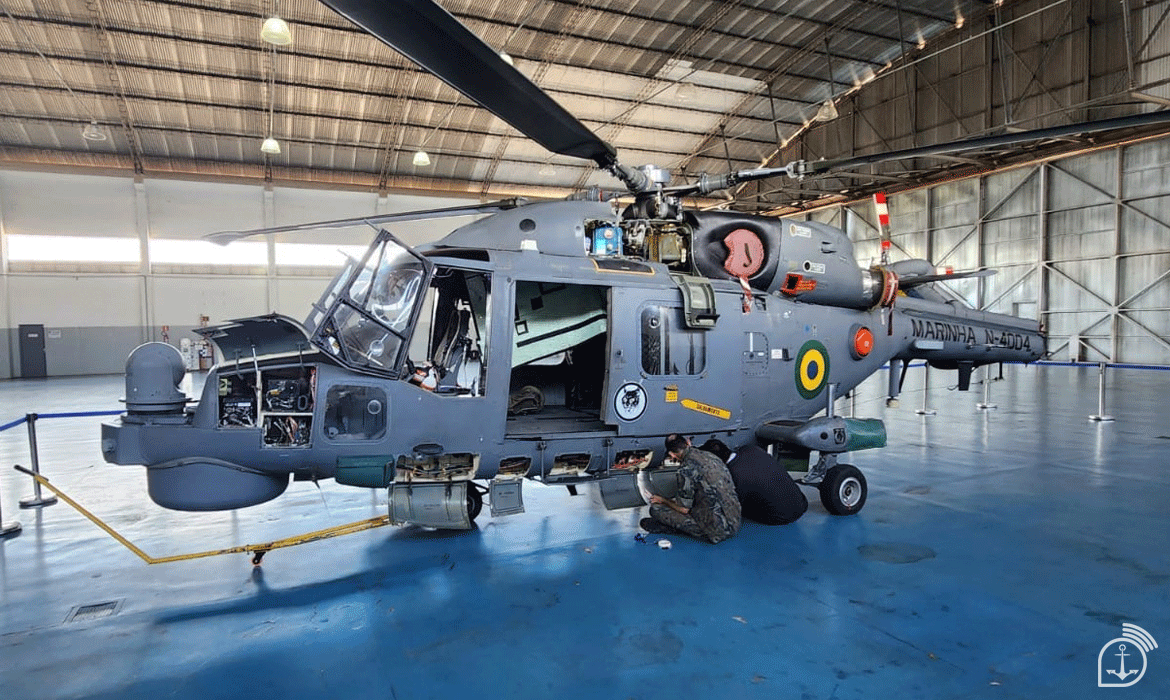The Brazilian Navy (MB) carried out the instrumentation of the AH-11B Super Lynx helicopter, at the Naval Air Force Command, in São Pedro da Aldeia (RJ). The activity was conducted by the 1st Squadron of Helicopters for Reconnaissance and Attack (EsqdHA-1), with support from the Institute of Research and Flight Tests (IPEV), linked to the Department of Aerospace Science and Technology of the Brazilian Air Force (FAB). Engineers, test pilots and specialized military personnel from both Forces participated in the action.
The instrumentation, which took place in February, consists of installing sensors, cables, data acquisition modules and other measuring equipment on board the aircraft. These devices allow precise information to be recorded during flight tests, such as wind speed, acceleration, aircraft attitudes and forces exerted on its structure. The objective is to collect the data necessary to prepare the wind envelope — a technical document that defines the safe operating limits of the helicopter on ship decks, considering aspects such as direction and intensity of the relative wind.
This phase is essential for the future operation of the AH-11B aboard the frigate “Tamandaré”, the first ship in the Navy’s new escort class. The information obtained will ensure that landings and takeoffs occur safely, even under challenging meteorological and operational conditions.
“The arrival of the ‘Tamandaré’ Class frigates will bring a new reality to our Squadron, and the AH-11B helicopter needs to be ready to operate with total safety on these ships. This work with IPEV is essential to ensure that landing and takeoff conditions are well defined and safe. It is very important to see this integration between the Navy and the Air Force working in practice, with each professional contributing to our aircraft operating efficiently from day one,” explained the Commander of Squadron HA-1, Frigate Captain Luiz Carlos Aguirre de Souza Filho.

